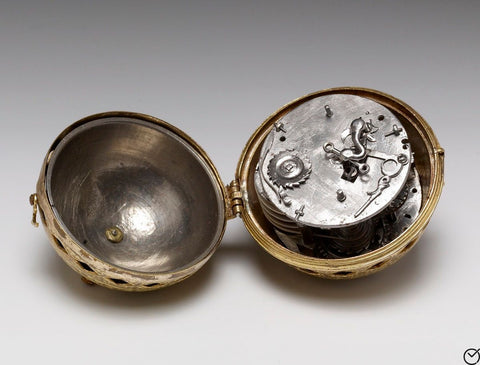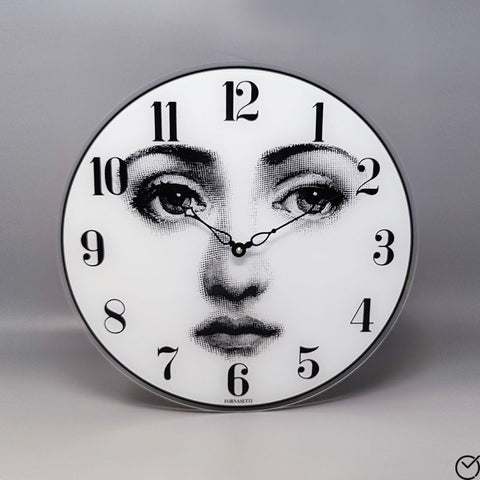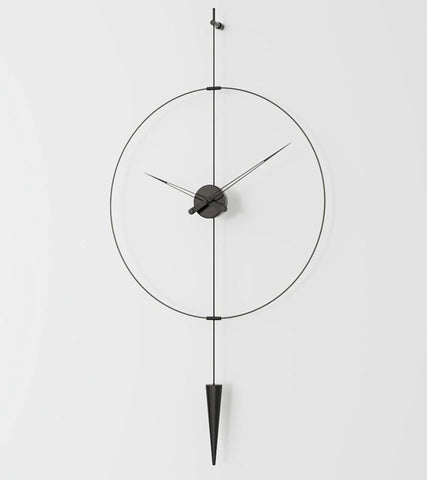History of Wall Clocks: From Medieval Times to Modern Homes

The history of wall clocks runs parallel to the progress of civilizations. Wall clocks have been an integral part of human life for centuries. It is evident from historical records that they were considered valuable tools since people were always looking for ways to measure time accurately.
From medieval times to modern homes, these timepieces have gone through significant changes in design and functionality. This article will take you through the history of clocks, giving you an overview of how they've evolved from their origins to the present.
What Is the History of The Clock?
Historical records trace the earliest clock examples to the ancient Egyptians back to 1500 BC.

Sundials
These models, known as sundials, determine the time based on the shadow position on the clock. Similar types have also been documented in Chinese records, dating back to earlier times. These records also demonstrate the calculation of time has been a concern for humanity throughout history.

Hourglasses
With the development of complex societies, keeping accurate time became essential for coordinating various activities like farming, trade, and religious ceremonies. To meet this demand, people invented more precise ways of measuring time.
During the Middle Ages, hourglasses were common since they measure time more accurately. The first hourglass, filled with flowing sand, remained unchanged for centuries. In addition to sand, other materials such as powdered eggshells, mercury, or fine powder of black marble were also used in hourglasses from time to time.
Invention of the First Mechanical Clocks
Long ago, religious leaders were the ones who took the first steps toward measuring time mechanically. Monks needed to know the exact time to pray, so they began exploring ways to measure time. Therefore, the first mechanical clocks weren't meant to show the time, just to make noise and announce praying time.
The early mechanical clocks had hammers that would hit a gong and were powered by weights. The world's oldest clock is believed to be the Salisbury Cathedral clock, built around 1386. (although some experts don’t comply with that).

The oldest still thickening watch that we know of is Philipp Melanchthon's Watch, which was made in 1530.

It has a spherical shape with a diameter of 48 mm and can run for 12-16 hours on a single winding. We don't know who actually made it because it doesn't have a brand. Due to its open and spherical shape, it is believed to have been made in Nuremberg, Germany.
When were Wall Clocks Invented?
Galileo's discovery of the pendulum principle in the 1530s paved the way for the wall clock invention. His discovery revealed that every pendulum has a fixed period. The period refers to the time it takes for the pendulum to complete a single oscillation, which means it returns to its original position at the end of each period.
Who Invented Wall Clocks?
In 1656, Christiaan Huygens, a Dutch scientist and inventor, created the first wall clock.

His invention was based on Galileo's principle of pendulum swinging, but Huygens believed that using narrower pendulums in clocks would result in fewer errors compared to larger ones. Huygens' invention inspired many other scientists and helped popularize pendulum clocks. By the 1700s, these clocks had become a symbol of social status.
Chronological Evaluation of Wall Clocks
- In the 1660s, due to technical improvements, clocks did not fall several hours behind but rather only a few minutes behind.
- In 1670, English clockmaker William Clement modified the pendulum to count seconds.
- In 1675, the King of England had a pocket watch sewn onto his waistcoat, making it a fashion statement.
- In 1721, a clock was only a few seconds off; in 1761, John Harrison created a clock that was only off by a fifth of a second per day.
- In 1810 the first wristwatch was made for the Queen of Naples by Abraham Louis Breguet.
- The first battery-powered wall clock was created in 1840 and used a spring and pendulum, with the dial operated by electric current.
- In 1850 the first mass-produced clocks were made in America.
- In 1868 the first wristwatch made in Europe was created and distributed to German sailors in 1880.
- The new style of the clock was produced by Swiss watchmaker Patek Philippe, who also created the first modern Swiss wristwatch in 1876.
- In 1885 British soldiers began using wristwatches during colonial military campaigns, especially during the Anglo-Burma War.
The Era of Quartz Watches
In 1880, the Curie brothers discovered the piezoelectric effect, where applying pressure to certain crystals can generate electrical energy. However, this discovery was only utilized in clocks after 89 years. In 1969, the Seiko brand developed the first quartz watch, which mark the clock before and now.
The Birth of the First Modern Wall Clocks
After the invention of the first quartz clock, modern designs became more common in wall clocks. George Nelson's modern wall clocks replaced classic wall clock models with more stylish designs.

This Nelson’s model, designed in 1947, was ahead of its time. Nelson's stylish wall clock designs brought a new touch to the wall clock and offered a variety of different models. Even today, Nelson's clock designs feature a modern aesthetic that is still considered relevant and contemporary. Since mass production techniques were not prevalent during that time, the production of these clock models was limited.

The 1960s and 70s marked the early years of experimenting with new styles in wall clocks. During those years, wall clocks were seen as the most important accessory in home decoration. Having a high-quality and stylish clock was an essential part of home decor.

This clock is from the 1970s.
The 1980s marked the time when modern clocks became common in households, with a wider range of varieties and models available. In the 1980s, the clock industry saw significant advancements with an increase in mass production and the introduction of simpler clock designs.

A model from the 1980s.
In the 1990s, we see a greater emphasis on visual touches in wall clock designs. In the 1990s, they were significantly influenced by various figures and styles. During this time, they also emerged as affordable accessories that could be given as gifts for homes.

A model from the 1990s.
Today, you don't need to have a big company like Seiko to create a clock model. All you need is a creative idea. In the past, quartz mechanisms used to fall a few minutes behind every day, but now they only fall a few seconds behind per month. These mechanisms are readily available, but to stand out, you need a distinctive idea and design.
A model from modern times.
At Mclocks, our unique designs and sleek lines have details that complement any home decor. What makes Mclocks stand out from other clock manufacturers is our dedication to designing clocks not just for today's fashion and styles but also timeless designs.
Our modern wall clocks are built to last a lifetime without significant maintenance and can be handed down.

